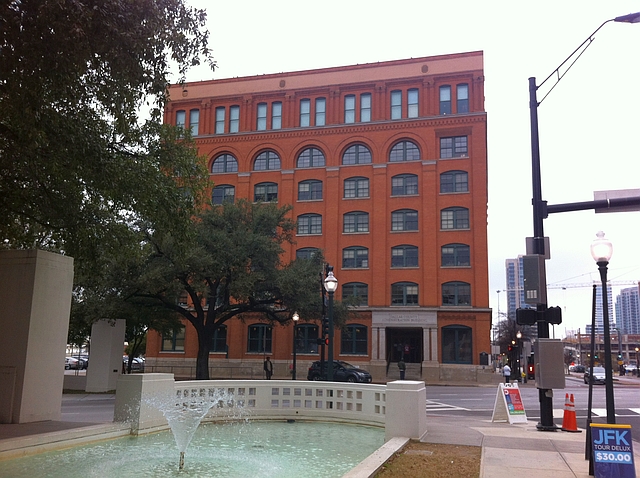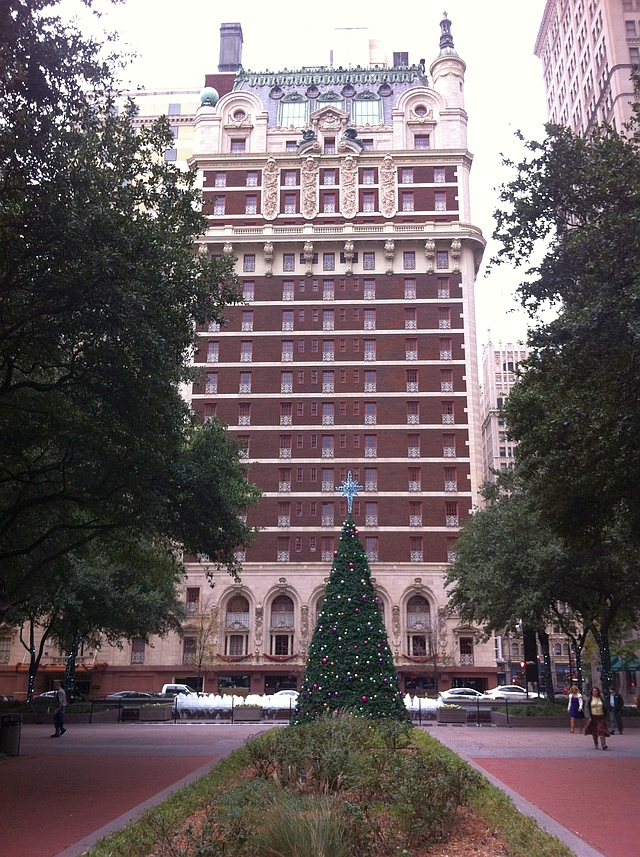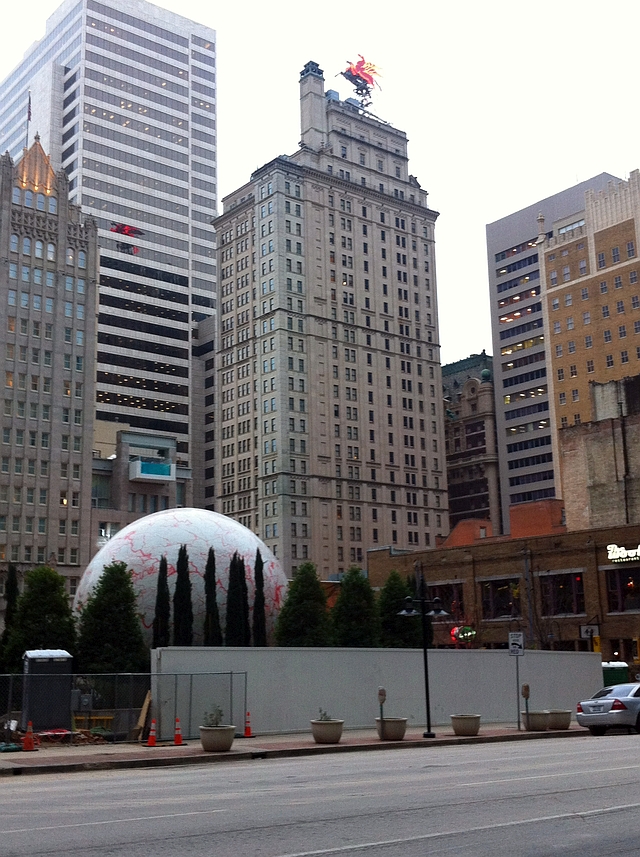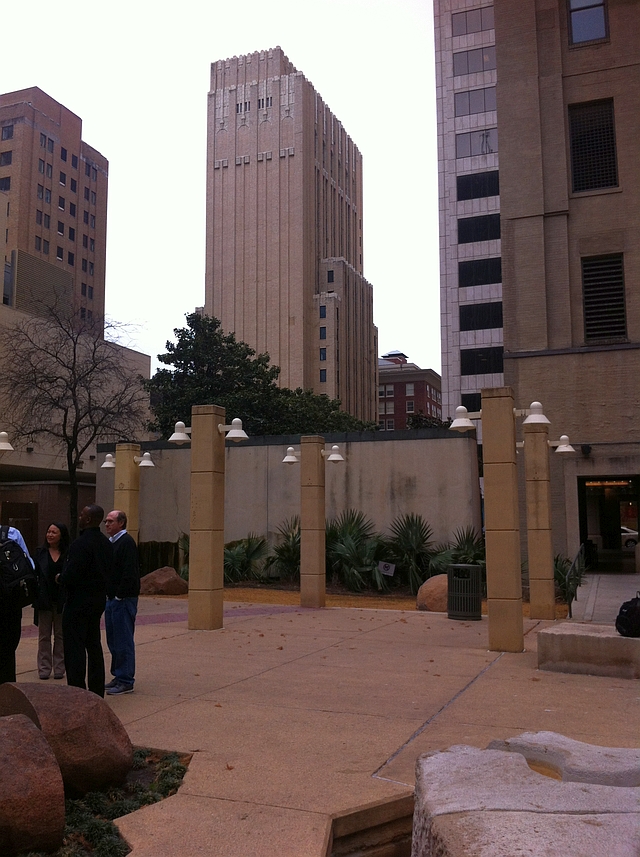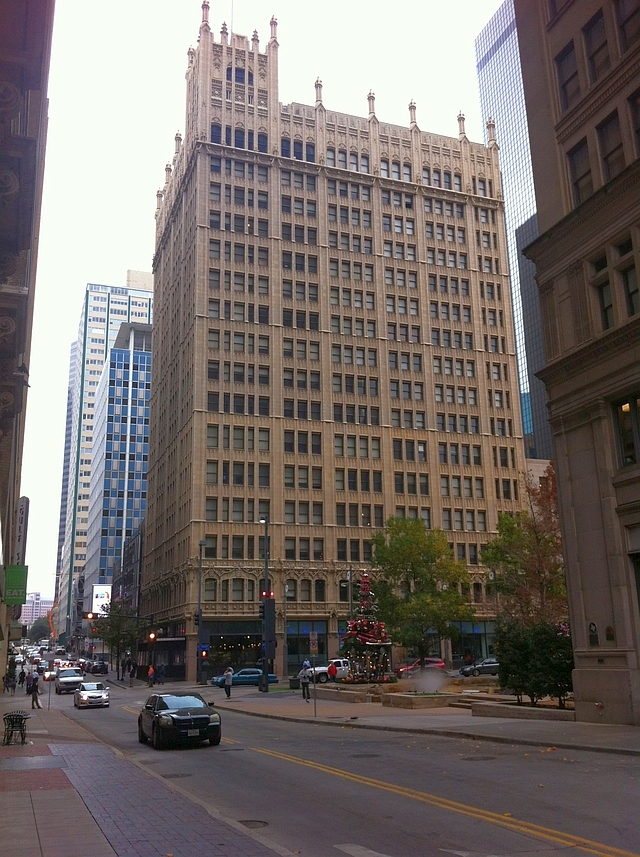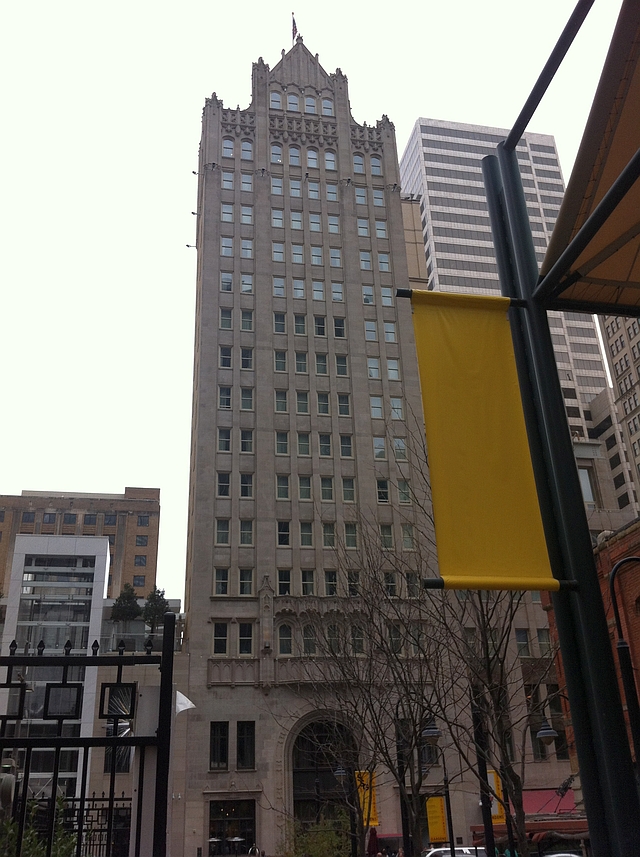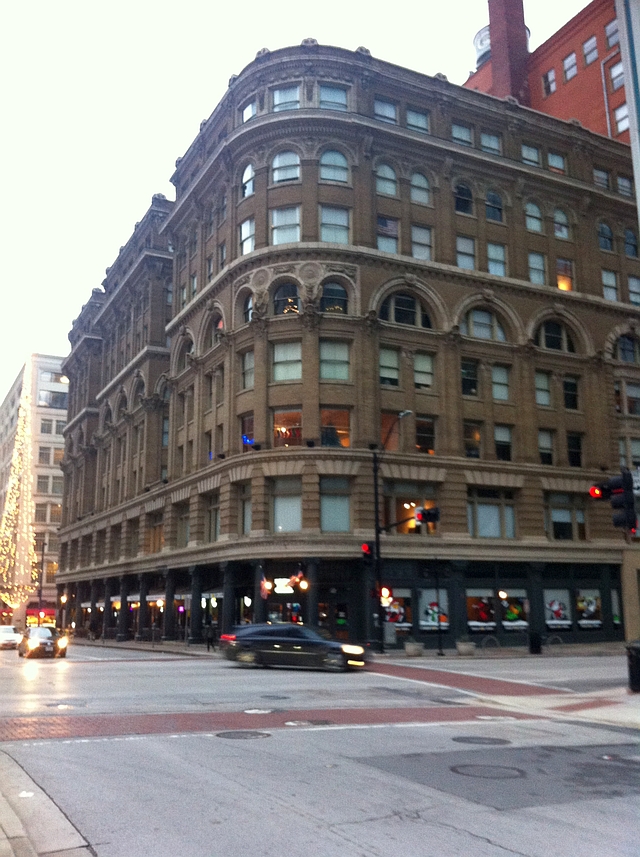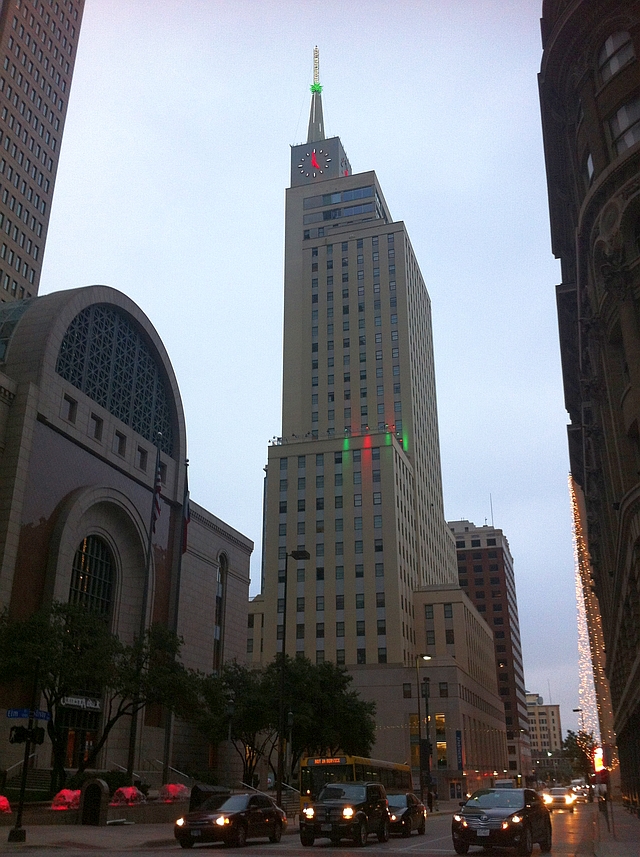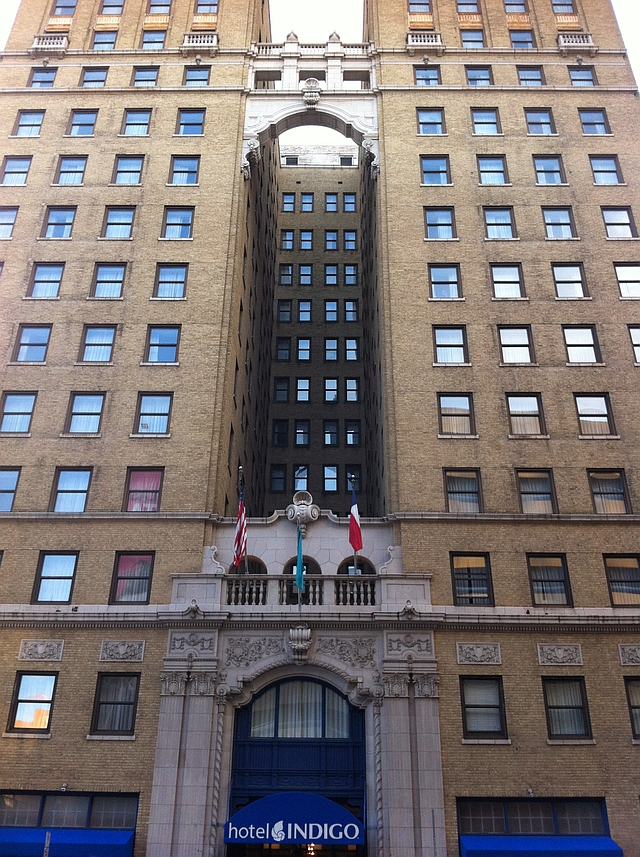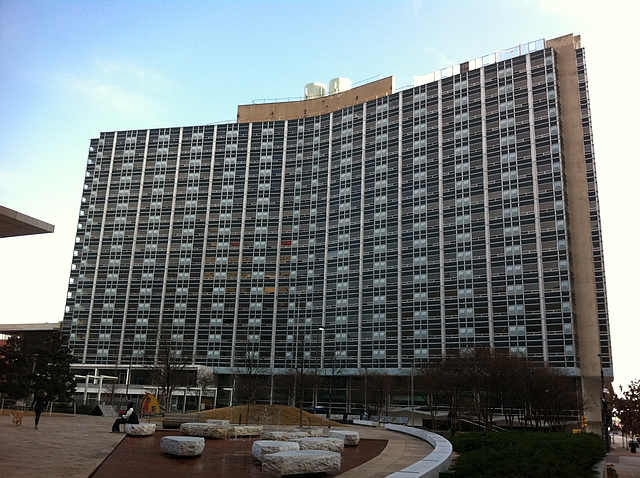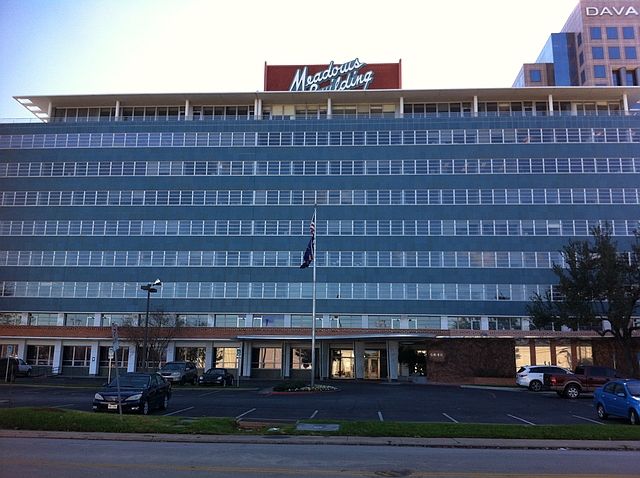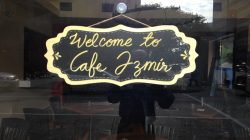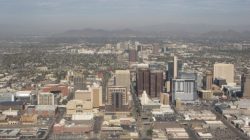Here’s something a little different for your weekend reading – a Road More Traveled history lesson about my hometown. People associate many things with Dallas, but iconic, historic architecture usually isn’t one of them. The downtown skyline is certainly distinctive, but fact is, the city hasn’t done a very good job of protecting its heritage, as the recent demolition of several century old buildings across the street from where I work demonstrate (editorial: why we need yet another high-end retailer right next door to the city’s original Neiman Marcus is beyond me, but whatever).
Despite all of the demolitions over the years, though, for those who enjoy seeing picturesque old buildings, there are still several choice examples remaining downtown, if you know where to look. In this post, I’ll go through several of the better examples of historical architecture still in existence, starting at the west end of downtown and working east, with one non-CBD example at the end.
You may be wondering, what does this have to do with a travel website? First, several of downtown Dallas’ finest historic buildings also serve as some of the city’s best hotels today, for those coming to town for business or a special occasion. Second, one of my favorite activities, and I’m guessing a favorite of at least some who frequent this blog, when traveling to a large city is walking around the central business district and admiring well-kept historic buildings (the walk usually doubles as a way to scout out places to see or eat at later in the day).
Note: this is NOT a comprehensive listing of all buildings of historical significance in downtown. This post would be inordinately long if I listed them all. I have, therefore, picked ten structures that I think are most relevant and interesting to visitors and history seekers taking a stroll downtown. The total length of this walking tour is approximately one mile. It usually takes 45-90 minutes depending on your walking pace. For each building, I’ll list the original and/or best known name of the building first. Then, I’ll show the currently used name, if applicable.
Southern Rock Island Plow Company Building
- Now: Texas Schoolbook Depository/The Sixth Floor Museum
- Address: 411 Elm Street
- Built: 1903
- Style: Romanesque Revival
This is probably the one building that most everyone will recognize, though for the wrong reasons; the sixth floor of this building was Lee Harvey Oswald’s hideout when he assassinated President John F. Kennedy in 1963. The Texas Schoolbook Depository didn’t actually store textbooks until 1961, as the building had several uses in the decades before. The Rock Island Plow Company originally constructed it shortly after the turn of the 20th century. Besides its connection to an unfortunate chapter in American history, the building is significant locally as one of the oldest surviving structures in the central business district. John Neely Bryan once owned the land on which the building sits; many credit him with founding the city of Dallas.
The Texas Schoolbook Depository Building is also the unofficial gateway to downtown’s historic West End, which contains a fair number of restored buildings dating to the early 20th century.
Hotel Adolphus
- Now: same
- Address: 1321 Commerce Street
- Built: 1912
- Style: Beaux-Arts
Though most associate the Busch family with St. Louis, Anheuser-Busch founder Adolphus Busch commissioned two buildings in downtown Dallas. I’ll cover one later in this piece; the other is the Adolphus Hotel. Busch intended to create the first “grand and posh hotel” in the city of Dallas. I think it’s safe to say he succeeded. The tallest building in the city until the construction of the Magnolia Petroleum Building next door, the Adolphus has long been regarded as one of the city’s finest hotels, hosting international dignitaries and presidents from Warren G. Harding to George H.W. Bush on their visits to the city.
The legendary French Room restaurant is perhaps THE place to go for special occasions like anniversaries, and might be the last restaurant in the city to require jackets for dinner. Interestingly, the hotel once boasted nearly 1,200 rooms, but a remodeling in the 1980s greatly increased the size of its guestrooms, and reduced the inventory to its current level of 428. Notably, the Adolphus remains one of the few old Dallas buildings maintaining its original use. Rumor has it that the hotel’s 19th floor is haunted by the ghost of a jilted bride-to-be who was left at the altar.
As an aside, my former employer put me up in the Adolphus for a night before my interview that resulted in my first job offer out of grad school, back in November, 2000. It was years ago, but I do remember the rooms living up to the hype.
Magnolia Petroleum Building
- Now: Magnolia Hotel
- Address: 1401 Commerce Street
- Built: 1921
- Style: Beaux-Arts/Renaissance Revival
The Magnolia Petroleum Building is one of the most storied buildings of the central business district. When it officially opened in 1922 at a cost of $4 million, it was Dallas’ first skyscraper, the tallest building west of the Mississippi River, and reportedly the first building in the United States to have central air conditioning. But its most enduring feature wouldn’t appear for another 12 years – the neon red Pegasus adorning the building’s roof which went on to become the logo of what became the Mobil Oil Corporation, and the unofficial symbol of Dallas. The winged horse originally rotated on a pedestal, but problems with the motor made it stationary in 1974, and Mobil moved out of the building three years later. Decades of harsh Texas weather finally forced the darkening of Pegasus in 1994.
The new owners commissioned a replica of Pegasus as part of the building’s repurposing into the Magnolia Hotel. The city then re-lit Pegasus at the stroke of midnight on January 1, 2000, allowing it to grace the skies of Dallas once more. It does not rotate, however, as fixing the motorized base proved too costly.
As mentioned, the building today is the home of the swanky Magonlia Hotel, one of the city’s finest boutique hotels. Thankfully, the hotel’s success means the majestic Pegasus will stay lit for hte forseeable future.
Dallas Power & Light Building
- Now: DPL Flats lofts
- Address: 1506 Commerce Street
- Built: 1931
- Style: Art Deco/American-style
The DP&L building was the first electrically welded building west of the Mississippi, and is one of the only surviving examples of Art Deco architecture remaining in the entire city. The building emptied years ago when TXU (Texas Utilities, the successor company to Dallas Power & Light) moved their headquarters, but thankfully, it was saved from a date with the wrecking ball and was repurposed as luxury apartments in 2005.
Busch Building
- Now: Kirby Residences on Main (loft apartments)
- Address: 1509 Main Street
- Built: 1913
- Style: Late Gothic Revival
Also known as the Kirby Building. The other building commissioned by St. Louis beer magnate Adolphus Busch, he originally built the towering Gothic-style structure as office and retail space to accompany the Hotel Adolphus a couple of blocks away. At the time, it was only the second commercial building in the United States constructed in the Gothic style. As with far too many of the CBD’s historic buildings, the Busch Building went vacant during the oil bust of the 1980s. But it also represented the first attempt to bring life and people back to downtown, when construction of the Kirby Residences on Main began in 1999.
Dallas National Bank Building
- Now: Joule Hotel
- Address: 1530 Main Street
- Built: 1927
- Style: Gothic Revival
One of two Gothic-style structures in Dallas, the Joule is probably my favorite downtown building, thanks to a hauntingly beautiful Gothic top that, to me, screams “Batman”. The Joule today is known for its eccentric owner, Tim Headington, who is also responsible for the hideous gigantic eyeball in the park across the street. The hotel’s most famous (or is it infamous?) feature, though, is the 10th floor pool that cantilevers over Main Street below (not visible in the above photo). The hotel itself has an excellent reputation for luxury and service, and along with the Adolphus, is a favorite among Dallasites to celebrate special occasions. One of the hotel’s restaurants, CBD Provisions, is one of the area’s pioneers in “modern Texas cuisine”, its signature dish being a giant pig’s head served for dinner. I found it alright, though not up to the hype.
Incidentally, I work in Thanksgiving Tower across the street, and have a clear view of the 10th floor pool. Yes, people really do swim in the pool when the weather is warm. No, it’s not close enough to play peeping Tom.
Wilson Building
- Now: The Wilson (apartments)
- Address: 1623 Main Street
- Built: 1904
- Style: Late 19th/20th Century Revival
The 12-story Wilson Building is, to my knowledge, the only building downtown patterned after a French building, in this case the Palais Garnier in Paris. It held the title of tallest building in Dallas from 1904 until 1909; many architects regarded it as the premier commercial structure west of the Mississippi River. The Wilson Building’s connection to Dallas history is more indirect than several of the other structures described here. The basement and first two floors of the Wilson housed the Titche-Goettinger department store, which became one of the fledgling city’s most successful department stores, even though the main commercial district at the time was several blocks to the west. The store’s success convinced another fledgling high-end Dallas establishment to build their flagship store across the street. The store? Neiman Marcus, which went on to become a city and national institution.
Many years later, the building would have a more direct connection to the city’s history, when the H.L. Green Department Store occupied the lower floors. The store’s lunch counter was the city’s first to be integrated during the civil rights movement of the 1960s.
Mercantile National Bank Building
- Now: Mercantile Place Apartments
- Address: 1800 Main Street
- Built: 1942
- Style: Moderne
Best known for its dinstinctive clock tower, radio personality Mike Rhyner’s idolized the building into Dallas pop culture with his opening on The Hardline sports talk show (“according to the tower of the friendly Mercan-teel…”). Significantly, the building was the only skyscraper completed in the United States during World War II; though the government ordered a halt of most private construction due to war shortages of materials, they granted an exception to The Merc. Why? Construction workers already pre-fabricated most of the building’s steel. In the typical game of Dallas one-upsmanship, The Merc took over the title as tallest building west of the Mississippi and in Dallas upon its opening in 1942. It held the title for just 12 years, though. The rival Republic National Bank’s tower just up Ervay Street one-upped it in 1954.
Robert L. Thornton, mayor of Dallas from 1953-1961, once owned the Mercantile Bank Building. His name also graces two Dallas freeways (IH-30 east of downtown, and IH-35E south of downtown). Mercantile Bank later changed its name to MBank, and constructed Momentum Place (now known as Comerica Tower, and the third tallest building in Dallas) across Main Street in 1987.
Dallas Hilton Hotel
- Now: Hotel Indigo
- Address: 1933 Main Street
- Built: 1925
- Style: Sullivanesque/Beaux-Arts
I’ve saved the two best pieces for hotel geeks for the last. Most people associate Hilton Hotels namesake Conrad Hilton with California. But in fact, he got his start in hotels right here in Texas. The Dallas Hilton Hotel was the first to bear the Hilton name. Roughly modeled after the Magnolia Building, the Dallas Hilton was designed to appeal to a new type of clientele – “The Average Man” – with moderate prices and modern design.
While the city center had the ritzy Adolphus and Baker Hotel (now demolished) for wealthy patrons, the average middle-and-working class traveler had very few options, a void Hilton rushed to fill; the concept eventually spread to nine other properties throughout the state. Hilton kept room rents affordable by maximizing the hotel’s space with ancillary services. These included a pharmacy, barber shop, coffee shop, and tailor. Hilton also pioneered the use of the 99-year ground lease in Texas to keep costs low. The hotel reflagged several times after Hilton moved to California in 1938. Today, IHG Group operates it as Hotel Indigo, a competitor to other swanky boutique hotels downtown like the Adolphus, Joule, and Magnolia.
Statler Hilton
- Today: vacant (currently scheduled for redevelopment). Updated: the Statler Dallas recently reopened as part apartment complex, part hotel.
- Address: 1914 Commerce Street
- Built: 1956
- Style: Mid-century Modern
Conrad Hilton re-entered the Dallas hotel scene in 1956 with the opening of the Statler Hilton, after his chain had purchased rival Statler Hotels in 1954. The Statler Hilton was revolutionary for its time, and not just because of its cutting-edge (for the era) design. It boasted many industry firsts such as elevator music and custom color TVs in every guestroom; many considered it America’s finest convention hotel. The largest convention facility in the south, and the largest hotel in the Southwest, the Statler Hilton helped establish Dallas as a major convention location for years to come.
The hotel sat vacant after 2001. With Mid-Century Modern design having fallen badly out of favor, formulating a redevelopment plan has proven to be difficult. Sadly, the building has sat atop the CBD’s “hit list” pretty much ever since. Last year, yet another North Texas developer puchased the building, promising to repurpose the hotel as another mixed-use residential development. We’ll see if that actually occurs, though downtown’s recent renaissance and the construction of the Main Street Garden Park across the street perhaps make it more likely this time.
Update: the Statler finally reopened in 2018. The Statler Dallas Hotel, fittingly a Hilton Hotel under the Curio Collection, occupies part of the building. The Statler Residences, an apartment complex, occupies the rest.
That does it for downtown, but I have one more building I want to highlight due to its significance to the region.
Meadows Building
- Now: same
- Address: 5646 Milton Street
- Built: 1955
- Style: Mid-century Modern
If you commute down Central Expressway or the DART Light Rail, you’ve no doubt seen this blue-green 50s contraption. You’re probably wondering why the heck am I featuring this edifice just south of Lovers Lane on this blog.
I used to regard the Meadows Building as an ugly eyesore, but then one day, while reading an e-book about the history of DFW’s freeway construction, I discovered an interesting fact about this building. It was the first major office building constructed outside of downtown. With its location adjacent to the then-new Central Expressway, it represented the first foray into suburban development alongside the region’s planned freeways. (At the time, Lovers Lane roughly marked the northern city limits of Dallas.)
Given the abject contempt with which Mid-Century Modern design is held today, it’s unclear how long the Meadows Building will survive the wrecking ball. Especially since it is now one of the most prime real estate locations in the city. The building sits across the freeway from SMU, in reasonably close proximity to downtown, and directly connected to DART’s Lovers Lane light rail station. Nothing is imminent, but if you appreciate modern design, check it out while you can.


